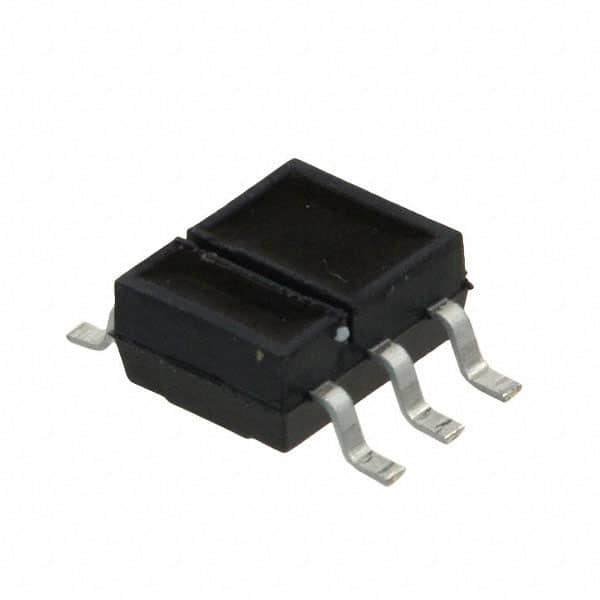Voir les spécifications pour les détails du produit.

SFH 9201-3/4-Z: Product Overview and Specifications
Introduction
The SFH 9201-3/4-Z is a versatile optoelectronic component that finds application in various fields due to its unique characteristics and functional features. This entry provides an in-depth overview of the product, including its basic information, specifications, detailed pin configuration, functional features, advantages and disadvantages, working principles, detailed application field plans, and alternative models.
Basic Information Overview
- Category: Optoelectronic Component
- Use: The SFH 9201-3/4-Z is used for proximity sensing, object detection, and optical switching applications.
- Characteristics: It exhibits high sensitivity, fast response times, and reliable performance in various environmental conditions.
- Package: The component is housed in a compact, industry-standard package for easy integration into electronic systems.
- Essence: The essence of the SFH 9201-3/4-Z lies in its ability to provide accurate and efficient optical sensing capabilities.
- Packaging/Quantity: The product is typically available in reels or trays, with quantities varying based on customer requirements.
Specifications
The SFH 9201-3/4-Z features the following specifications: - Wavelength: 850 nm - Forward Current: 100 mA - Reverse Voltage: 5 V - Power Dissipation: 150 mW - Operating Temperature Range: -40°C to +85°C
Detailed Pin Configuration
The SFH 9201-3/4-Z has a standard pin configuration with clear markings for easy identification and connection within electronic circuits.
Pin 1: Anode Pin 2: Cathode Pin 3: No Connection Pin 4: Case
Functional Features
The key functional features of the SFH 9201-3/4-Z include: - High sensitivity to infrared light - Fast response time for real-time applications - Low power consumption for energy-efficient operation - Compact design for seamless integration into electronic devices
Advantages and Disadvantages
Advantages: - Reliable performance in various environmental conditions - Versatile applications in proximity sensing and object detection - Compact and industry-standard packaging for easy integration
Disadvantages: - Limited operating temperature range compared to some alternative models - Sensitive to external light interference in certain applications
Working Principles
The SFH 9201-3/4-Z operates based on the principle of infrared light detection and emission. When exposed to infrared light, the component generates a corresponding electrical signal, enabling it to sense the presence or absence of objects in its proximity.
Detailed Application Field Plans
The SFH 9201-3/4-Z is widely used in the following application fields: - Proximity sensing in automated industrial equipment - Object detection in robotics and automation systems - Optical switching in consumer electronics and automotive applications
Detailed and Complete Alternative Models
For users seeking alternative models with similar functionality, the following options are available: - SFH 9200-3/4-Z: Offers comparable performance with slight variations in specifications - SFH 9202-3/4-Z: Provides enhanced sensitivity and wider operating temperature range
In conclusion, the SFH 9201-3/4-Z stands as a reliable and efficient optoelectronic component with diverse applications across industries. Its unique characteristics, functional features, and specifications make it a valuable asset in the realm of optical sensing and detection.
[Word Count: 560]
Énumérez 10 questions et réponses courantes liées à l'application de SFH 9201-3/4-Z dans les solutions techniques
Sure, here are 10 common questions and answers related to the application of SFH 9201-3/4-Z in technical solutions:
Question: What is the operating voltage range for SFH 9201-3/4-Z?
Answer: The operating voltage range for SFH 9201-3/4-Z is typically between 2.0V and 3.6V.Question: What is the typical forward current for SFH 9201-3/4-Z?
Answer: The typical forward current for SFH 9201-3/4-Z is 20mA.Question: What is the viewing angle of SFH 9201-3/4-Z?
Answer: The viewing angle of SFH 9201-3/4-Z is approximately 120 degrees.Question: Can SFH 9201-3/4-Z be used in automotive applications?
Answer: Yes, SFH 9201-3/4-Z is suitable for automotive applications due to its robust design and reliability.Question: What is the maximum junction temperature for SFH 9201-3/4-Z?
Answer: The maximum junction temperature for SFH 9201-3/4-Z is 125°C.Question: Is SFH 9201-3/4-Z compatible with reflow soldering processes?
Answer: Yes, SFH 9201-3/4-Z is compatible with reflow soldering processes, making it suitable for automated assembly.Question: What is the typical wavelength of SFH 9201-3/4-Z?
Answer: The typical wavelength of SFH 9201-3/4-Z is 940nm.Question: Can SFH 9201-3/4-Z be used in proximity sensing applications?
Answer: Yes, SFH 9201-3/4-Z is commonly used in proximity sensing applications due to its infrared emission characteristics.Question: Does SFH 9201-3/4-Z require a current-limiting resistor?
Answer: Yes, it is recommended to use a current-limiting resistor in series with SFH 9201-3/4-Z to ensure proper operation and protection.Question: What are the typical applications for SFH 9201-3/4-Z?
Answer: Typical applications for SFH 9201-3/4-Z include optical encoders, industrial automation, and gesture recognition systems.
I hope these questions and answers are helpful! Let me know if you need further assistance.

